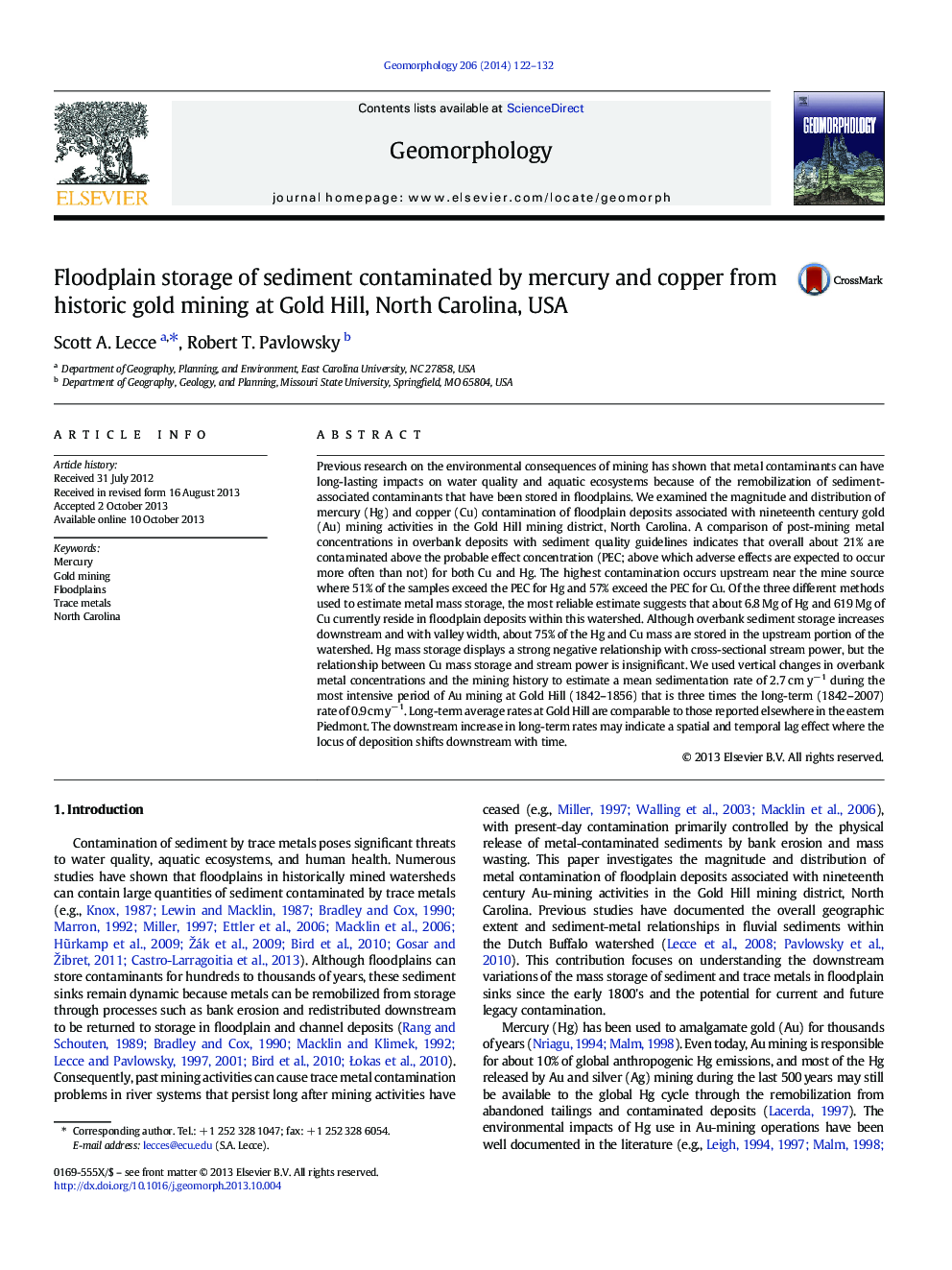| کد مقاله | کد نشریه | سال انتشار | مقاله انگلیسی | نسخه تمام متن |
|---|---|---|---|---|
| 4684650 | 1635443 | 2014 | 11 صفحه PDF | دانلود رایگان |
عنوان انگلیسی مقاله ISI
Floodplain storage of sediment contaminated by mercury and copper from historic gold mining at Gold Hill, North Carolina, USA
ترجمه فارسی عنوان
ذخیره سیلاب از رسوب آلوده به جیوه و مس از معادن طلا تاریخی در طلا هیل، کارولینای شمالی، ایالات متحده آمریکا
دانلود مقاله + سفارش ترجمه
دانلود مقاله ISI انگلیسی
رایگان برای ایرانیان
کلمات کلیدی
جیوه، استخراج طلا، سیب زمینی، فلزات کمیاب، کارولینای شمالی،
موضوعات مرتبط
مهندسی و علوم پایه
علوم زمین و سیارات
فرآیندهای سطح زمین
چکیده انگلیسی
Previous research on the environmental consequences of mining has shown that metal contaminants can have long-lasting impacts on water quality and aquatic ecosystems because of the remobilization of sediment-associated contaminants that have been stored in floodplains. We examined the magnitude and distribution of mercury (Hg) and copper (Cu) contamination of floodplain deposits associated with nineteenth century gold (Au) mining activities in the Gold Hill mining district, North Carolina. A comparison of post-mining metal concentrations in overbank deposits with sediment quality guidelines indicates that overall about 21% are contaminated above the probable effect concentration (PEC; above which adverse effects are expected to occur more often than not) for both Cu and Hg. The highest contamination occurs upstream near the mine source where 51% of the samples exceed the PEC for Hg and 57% exceed the PEC for Cu. Of the three different methods used to estimate metal mass storage, the most reliable estimate suggests that about 6.8 Mg of Hg and 619 Mg of Cu currently reside in floodplain deposits within this watershed. Although overbank sediment storage increases downstream and with valley width, about 75% of the Hg and Cu mass are stored in the upstream portion of the watershed. Hg mass storage displays a strong negative relationship with cross-sectional stream power, but the relationship between Cu mass storage and stream power is insignificant. We used vertical changes in overbank metal concentrations and the mining history to estimate a mean sedimentation rate of 2.7 cm yâ 1 during the most intensive period of Au mining at Gold Hill (1842-1856) that is three times the long-term (1842-2007) rate of 0.9 cm yâ 1. Long-term average rates at Gold Hill are comparable to those reported elsewhere in the eastern Piedmont. The downstream increase in long-term rates may indicate a spatial and temporal lag effect where the locus of deposition shifts downstream with time.
ناشر
Database: Elsevier - ScienceDirect (ساینس دایرکت)
Journal: Geomorphology - Volume 206, 1 February 2014, Pages 122-132
Journal: Geomorphology - Volume 206, 1 February 2014, Pages 122-132
نویسندگان
Scott A. Lecce, Robert T. Pavlowsky,
